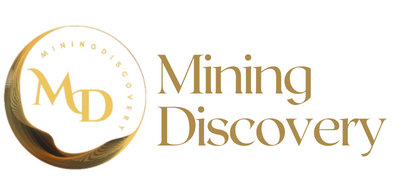Move over cryptocurrency, gold could have the last laugh this year
- The central banks of China and Russia are among those making huge purchases of gold amid geopolitical tensions
- The two countries are almost certainly ‘weaponizing’ the precious metal, which will only push up its price
A worker plunges a gold ingot into a cooling bath at the Uralelectromed Copper Refinery, operated by Ural Mining and Metallurgical Company, in Verkhnyaya Pyshma, Russia, on July 30, 2020. Central banks are estimated to have bought more gold in the third quarter of 2022 than ever before. Photo: Bloomberg
There has been considerable excitement in the gold market lately with the price touching US$1,900 an ounce last year and appearing likely to breach US$2,000 before long. But what is happening below the radar with the huge build-up of central bank gold holdings is of greater interest.
The People’s Bank of China and Russia’s central bank have been buying heavily, and while this may appear to be little more than shrewd, given that inflation is set to continue rising (even if at a slowing pace), these purchases have wider monetary and strategic significance.
They signify further challenges to the global financial and monetary order in 2023 as China and Russia seek, for their own separate reasons, to counter what has in effect become a tyranny of dollar domination. And they point to growing distrust and geopolitical tension between major economic powers.
Central banks as a whole are estimated to have bought more gold (399 tonnes) in the third quarter of 2022 than ever before, according to the World Gold Council, a London-based organization backed by gold mining companies.
Some see this surge in central bank buying as a return to global monetary stability or even a restoration of a quasi gold standard. Others see it as a retrograde step at a time when (they believe) central banks should be promoting cryptocurrency assets instead as the wave of the future.
The reality is that developments in the gold market are a brutal reminder of the damage being done to the global financial order by the current situation of warring states – not just the Ukraine war embroiling Russia but also the trade and technology wars unleashed by the US on China.
The gold market is full of mysteries about who is buying and when, why and where. Hence, last year’s buying surge has gone largely unnoticed. And why, if gold has been so much in demand, has the price not crossed the US$2,000 level?
Russia and China rank fifth and sixth respectively in the world in terms of gold reserves held. However, China and Russia are also respectively the world’s largest and third largest producers of gold, with Australia occupying the second slot. When their central banks begin buying a larger proportion of that output, it does not show up as an international market transaction.
Nor do all central banks report their gold holdings to the International Monetary Fund each month. According to online bullion investment service BullionVault, China’s central bank reports gold purchases “sporadically” while the Bank of Russia ceased reporting gold stockpiles soon after the invasion of Ukraine when it became locked out of bullion markets.
So, given that these two countries together represent a major force in global gold holdings as well as production, what are the likely implications of the relatively sudden build-up of gold reserves by their central banks? Are they “weaponizing” the precious metal? Most certainly, yes, and what more effective time to do so than when inflation is eroding the value of paper currencies (the dollar included), cryptocurrencies are losing their appeal as a supposed new form of “digital gold”, and investment demand for gold is rising?
A report in Japan’s Nikkei Asia newspaper last November suggested China is “thought to be stockpiling gold to cut greenback dependence”. However, there is a good deal more to it than that. Gold has traditionally been the basis of a monetary system and, if you wish to create a new one, you need gold to back it.
That is what China and Russia appear to have in mind now. China has long been seeking wider global use of the yuan. If the currency is perceived to be backed to a greater extent by gold, it could increase its appeal – even as a reserve currency.
China is also anxious to diversify its foreign exchange reserves away from the dollar (its US$1 trillion of US Treasury security holdings as of April 2022 were second only to those of Japan at $1.3 trillion among foreign holders) and replacing some of those with gold serves a double purpose.
People walk past the headquarters of the People’s Bank of China in April 2020. In recent year’s, China’s central bank has been trying to diversify its foreign exchange reserves. Photo: Reuters
What happened to Russia following the Ukraine invasion – the Russian central bank and commercial traders were locked out of global foreign exchange and bullion markets while Russian overseas assets were frozen – further supports China’s precautionary build-up of gold reserves.
BullionVault notes that US and European Union sanctions against Moscow in 2014-2018 over the annexation of Crimea saw Russia’s central bank buy more than 80 per cent of the country’s gold mine output, building its foreign exchange reserves by using rubles to support a key industry.
These gold purchases by China and Russia’s central banks, and smaller moves by central banks elsewhere that are concerned about disruptions to international financial flows as well as inflation itself, suggest that the rise in gold prices so far may only be the tip of the iceberg.
The gold price appears likely to breach US$2,000 an ounce in 2023 and may go much higher. It could reach US$4,000, given all the factors at play, Juerg Kiener, managing director and chief investment officer of Swiss Asia Capital, an independent asset manager based in Singapore, has suggested.
Gold may yet have the last laugh over cryptocurrency assets this year.



